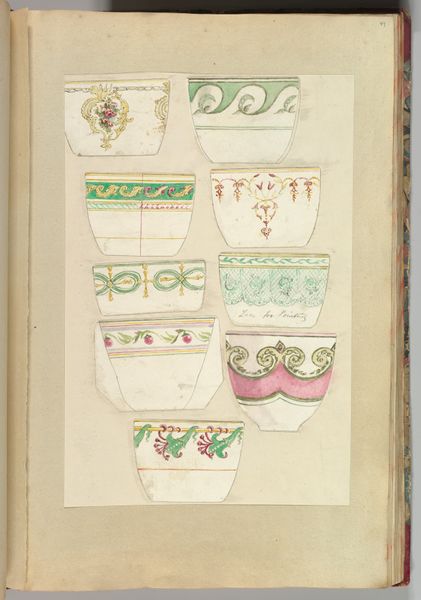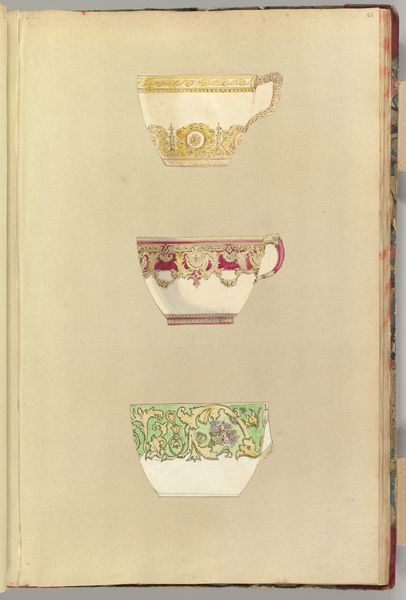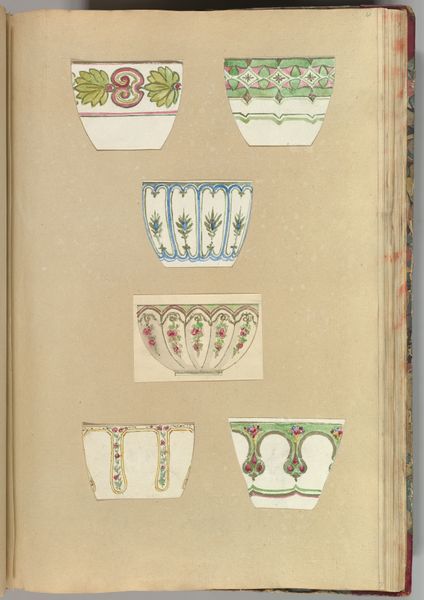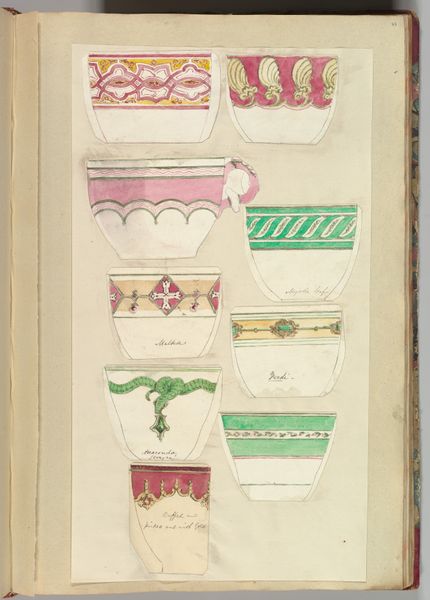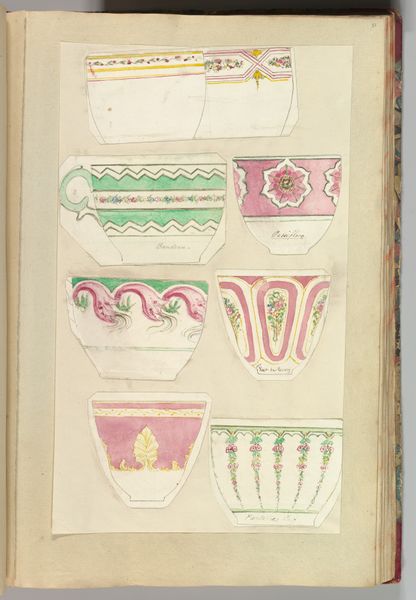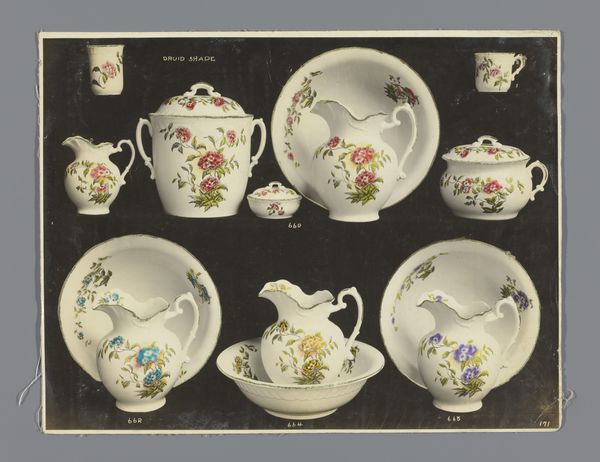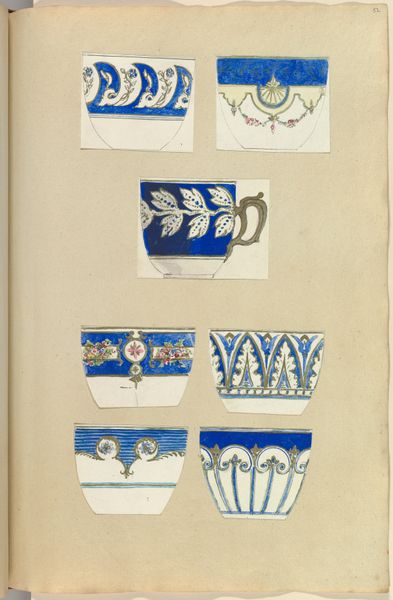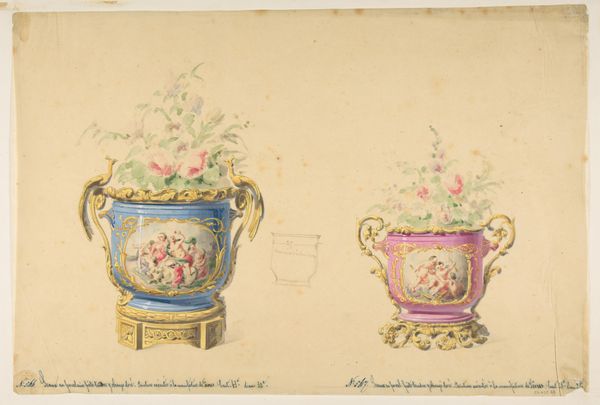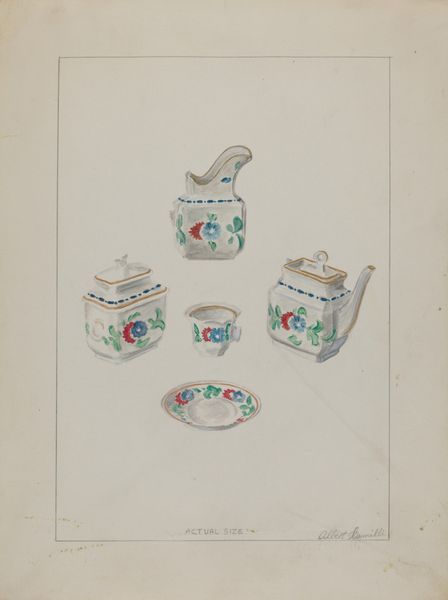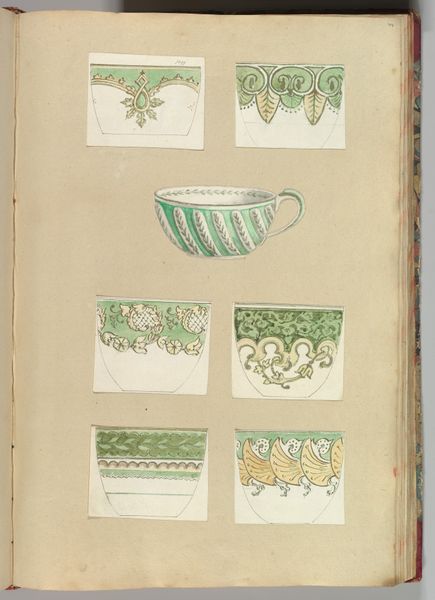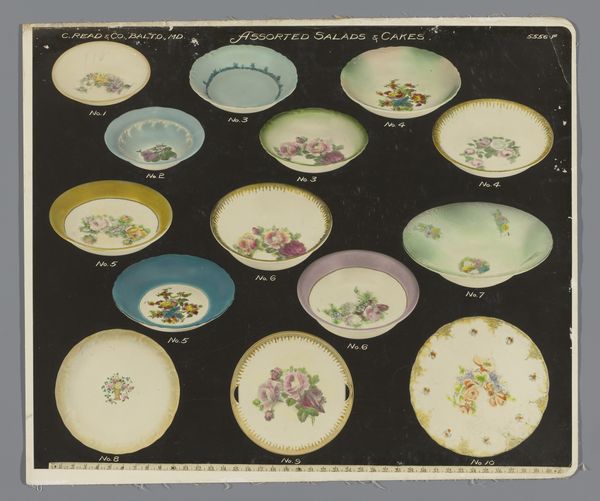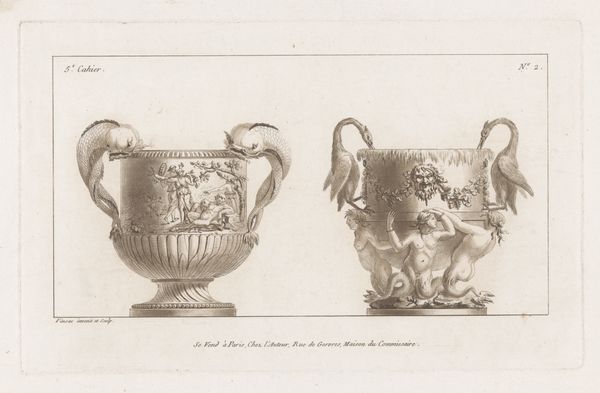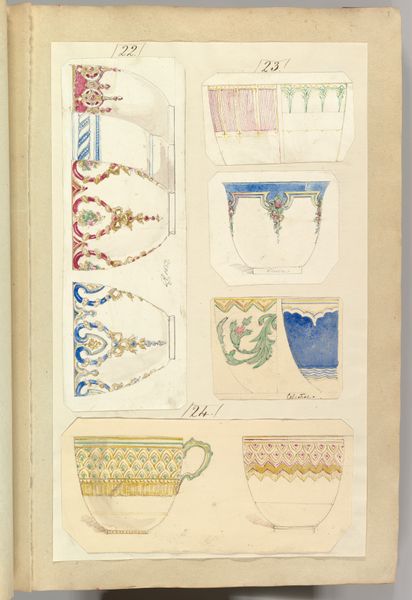
drawing, coloured-pencil, print, watercolor
#
drawing
#
coloured-pencil
#
water colours
# print
#
watercolor
#
coloured pencil
#
romanticism
#
decorative-art
#
watercolor
Copyright: Public Domain
Editor: This drawing, titled "Porcelain Designs," comes from the 1820s-1830s. It is a work on paper with coloured pencil and watercolor and is currently held at the Met. What I immediately notice are the repeated shapes – nine different teacup designs – which feels like an early industrial design prototype. It makes me wonder: What do these designs tell us about the society that would produce and consume these objects? Curator: Precisely! What seems like a simple design study reflects the burgeoning industrial revolution and the rise of consumer culture. Consider the societal function of porcelain at the time. Tea drinking, initially exclusive to the aristocracy, was becoming increasingly popular among the middle classes, creating a demand for accessible yet aesthetically pleasing porcelain. Editor: So these designs are directly related to shifts in class and consumption? Curator: Absolutely. And look closer. The romantic, floral motifs reflect the period's aesthetic tastes, but also signal aspirations for a more refined lifestyle. Porcelain factories, like Sèvres in France or those in England, competed fiercely for market share. The designs themselves became statements of status, influencing what families chose to display in their homes and, consequently, how they presented themselves to the world. Notice how some teacups are numbered, suggesting that the image was itself part of a broader commercial enterprise. Editor: It’s amazing to consider how much cultural weight could be carried by something seemingly simple, like a teacup. Curator: Indeed. These designs encapsulate not only aesthetic preferences but also the complex interplay of social aspirations, economic forces, and the democratisation of luxury in the 19th century. They are, in a way, little documents of their time. Editor: I’ll definitely look at decorative arts differently now! Curator: Hopefully with a renewed appreciation for the forces at play in shaping our visual landscape.
Comments
No comments
Be the first to comment and join the conversation on the ultimate creative platform.
